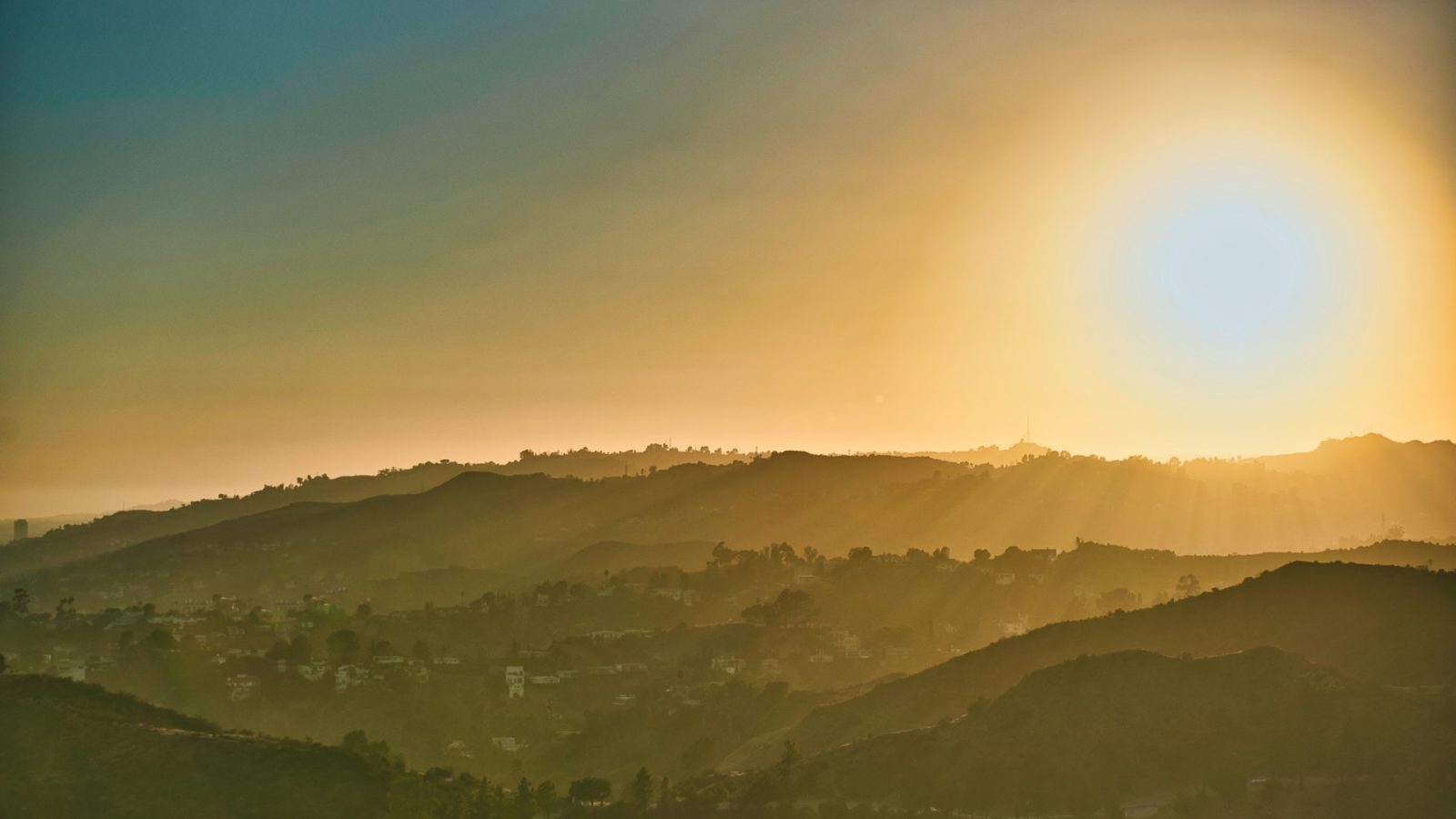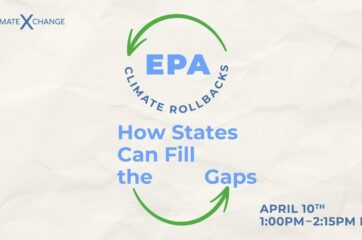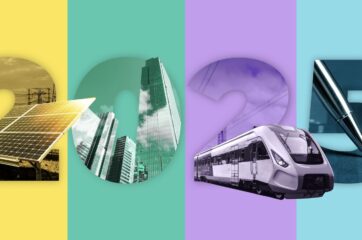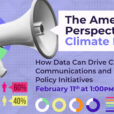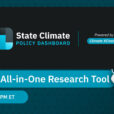This summer, states in the Western U.S. are battling record breaking heat, confounded by wildfires — the frequency and severity of which are only increasing with the climate crisis. The extreme heat many Americans are experiencing is more than just a nuisance, it’s a serious public health issue. Each year, more than 65,000 Americans visit the hospital for heat-related illnesses, and an average of 700 people die from extreme heat. In fact, it causes more deaths than any other weather-related hazard, and disproportionately impacts urban, low-income communities of color. For cities, these inequities are due in part by an increasingly persistent phenomenon known as urban heat islands.
The Urban Heat Island Effect
Urban heat islands is a term that encapsulates how cities experience disproportionately high temperatures due to unshaded roads and a heavy concentration of buildings that absorb heat and radiate it into the air. This urban heat island effect is only getting worse. By 2050, more than 970 cities across the globe will experience average summertime temperature highs of 95 degrees Fahrenheit (35 degrees Celsius); today, only 354 cities reach those temperatures. From 1900 to 1980, a new urban temperature record was set, on average, every 13.5 years; from 1981–2019, a new record was set every three years.
According to the EPA, without meaningful steps to reduce planet-warming emissions, the average number of extreme heat days in the U.S. is expected to more than triple from the year 2050 to 2100. As more people move into cities, the amount of urban populations exposed to higher temperatures is expected to increase by 800% and impact 1.6 billion people by mid-century. Although air conditioning and central cooling systems are a combative tool against ever-increasing temperatures, some urban communities lack access to these amenities or have units with low energy efficiency. For many low-income neighborhoods, this lack of access can be dangerous, or even deadly.
The Inherent Inequities of Heat
The 1995 Chicago heat wave, which first brought national attention to the dangers of heat waves in urban communities, saw significantly higher death rates among Black and low-income populations. This was not happenstance; these populations not only had health conditions that made them more vulnerable to the extreme heat, but they also lacked opportunities to escape the heat, such as access to air conditioning in their homes or at local public institutions, or even the ability to safely keep their windows open.
Additionally, low-income and Black and Brown populations pay disproportionately more for household energy costs while often living in energy-inefficient homes that cost more to keep cool, exacerbating the impacts of extreme heat. But even access to air conditioning cannot negate the fact that urban, low-income communities can be as much as ten degrees Fahrenheit hotter than urban, high-income neighborhoods. When coupled with the already high temperatures in cities, low-income communities can experience temperatures 20-25 degrees hotter than wealthy suburban neighborhoods.
According to an NPR analysis, in 75 percent of the United States’ most populous cities, where it is hotter, the people are poorer. This is no coincidence. Poorer areas often lack cooling infrastructure, namely trees and parks that provide shade and break up the heat-absorbing impervious surfaces, such as buildings and sidewalks, that contribute to the urban heat island effect. Further study into this trend has exposed a link between historically redlined neighborhoods and urban heat islands. Redlining is the systematic denial of mortgage financing to otherwise creditworthy predominantly Black neighborhoods.
Beginning in the 1930s with the creation of the Federal Housing Administration, redlining was practiced overtly across the U.S. for decades until it was officially outlawed in 1968 under the Fair Housing Act. This thirty-plus year policy caused significant housing segregation, with negative implications that are still being felt today. According to a new study published by the Science Museum of Virginia, Virginia Commonwealth University, and Portland State University, neighborhoods subjected to decades of discriminatory housing policies are an average of five degrees hotter than non-redlined neighborhoods, with some extreme differences of almost 13 degrees. These policies have exacerbated decades of discrimination against Black and Brown communities, with its effects now being further compounded by climate change.
Beyond the deadly impacts of extreme heat exposure alone, research by the EPA finds that asthma is also more common among low-income and Black and Brown communities due in part to environmental factors. In urban areas, air quality decreases as temperatures increase partly because the sun reacts with air pollutants to form a ground-level ozone layer, or smog. Smog is a major trigger of asthma, and for those exposed to lower air quality and hotter temperatures, the confounding of the two produces a toxic combination. According to Dr. Amit Chandra of the University of Maryland Medical Center Midtown Campus, heat plays a factor in worsening chronic conditions, especially cardiovascular conditions. A 2013 study by the CDC found that those living in low-income areas are ten to15 percent more likely to suffer from a chronic disease such as asthma, heart disease, and hypertension. The added health risks of low-income and Black and Brown urban communities, coupled with increasing summer temperatures, pose a critical public health threat that must be addressed by policymakers and urban planners.
Policy Solutions
To mitigate the effects of urban heat islands, policymakers should require the incorporation of green infrastructure — namely trees, vegetation, and green roofs — into future plans. These solutions help reduce the heat trapped in urban landscapes by shading surfaces, deflecting radiation from the sun, and releasing moisture into the air. In a study conducted by the city of Philadelphia, researchers found that green infrastructure improvements reduce ozone and particulate pollution levels enough to significantly reduce mortality, hospital admissions, and loss of work days. Incorporating green infrastructure improvements into regular street upgrades and capital improvement projects can maintain continued investment into heat-reducing practices.
Providing access to air conditioning units also offers alleviation to the effects of urban heat islands, but this resource is often limited to those who can afford the unit and the high energy costs that come with it. The Low-Income Home Energy Assistance Program offers assistance for qualified families in securing and maintaining in-home cooling and heating solutions. As mentioned previously, low-income and Black and Brown households are less likely to have central cooling systems, making it more difficult, and often more costly, to combat the heat. Local and state level policymakers should promote programs of this nature and undertake a public information and technical assistance campaign to help residents obtain and submit the proper documents to qualify for this program.
Ensuring that air conditioning supply can meet the demand is equally as important. This summer in Seattle, a city with average summer temperatures around 70 degrees Fahrenheit, a historic three-digit heat wave sent residents into a frenzy when air conditioning units sold out virtually everywhere. The city was unprepared for temperatures of this magnitude, and keeping people safe during the heatwave became a major challenge due to the limited access to fans and air conditioning. It is vital that city officials address supply issues and provide administrative and financial support to companies carrying out these operations. Further, providing residents with information on air conditioning maintenance to address the shortage in repair staff could help reduce the need for new air conditioning units and service appointments.
As temperatures continue to rise across American cities with rapidly growing populations, more people will become susceptible to the negative effects of urban heat islands and extreme heat. Low-income communities of color — who are already more likely to have chronic health problems due to decades of discriminatory housing, health and environmental policies — are especially vulnerable. This trend is not irreversible. With bold leadership and intentional urban planning, change is possible. It is critical that policymakers prioritize green infrastructure into future decision-making and move away from nonrenewable energy sources to mitigate accelerating impacts of the climate crisis. As UN Secretary-General António Guterres puts it, “the climate emergency is a race we are losing but it is a race we can win.”

